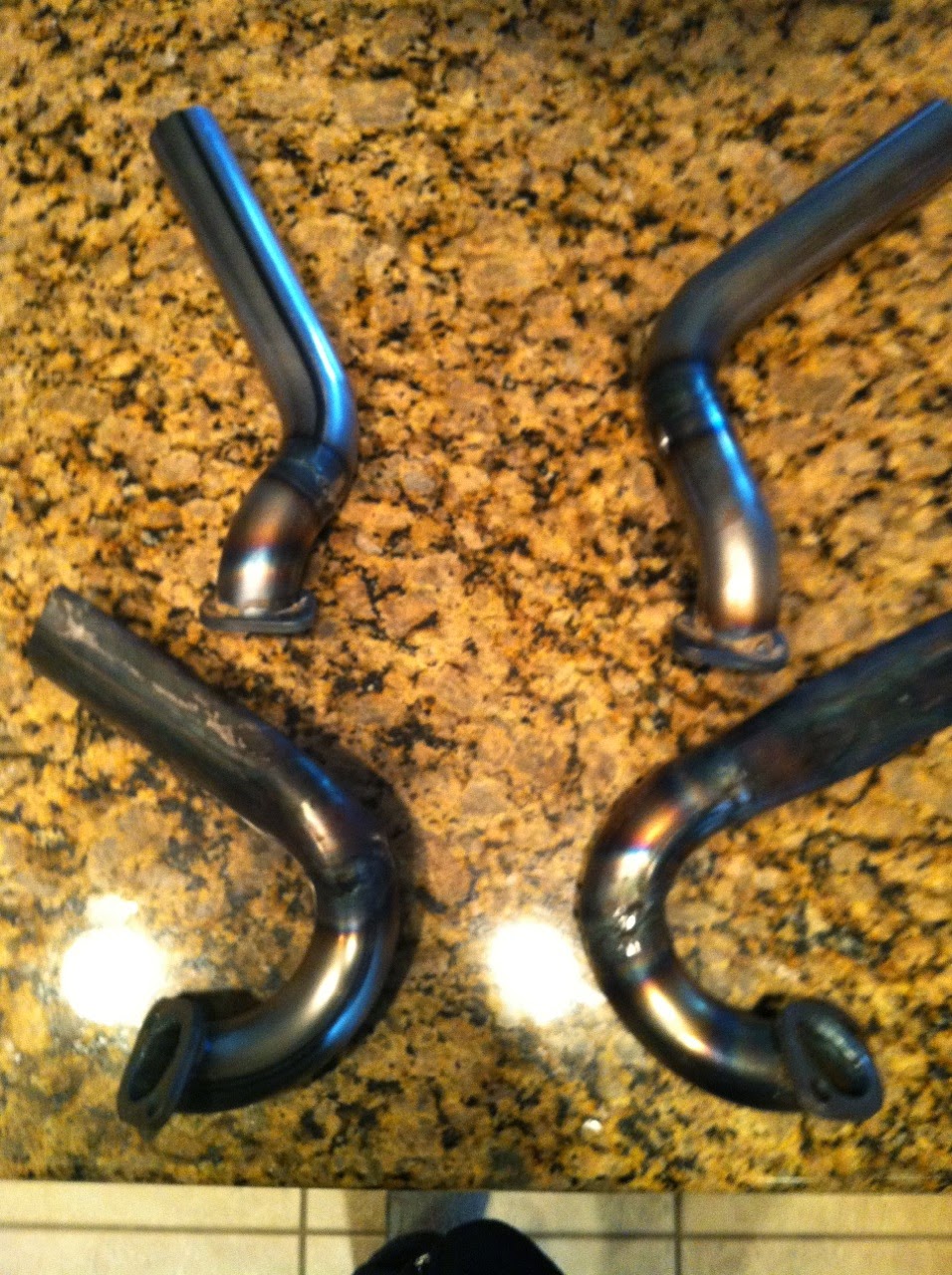Up until I started this blog a few years ago, the modifications and things I was doing with the Sonerai were posted on www.Sonerai.net. I had been wanting to get some basic history on the blog for a while but just did not have the time to do it. Since I have a few free hours on the way to the Mojave Fly-in, I figured I would recap the plane’s history (Part 1) and the latest round of modifications (Part 2).
Getting Started
I built N1463J over the course of about 4 years in a 1.5 car
garage. It came to me as an incomplete truss from Jonesboro Arkansas being
towed behind a friend's mini van on its own wheels. I was the 6th person that
owned the project and was determined to complete it!
 |
| Gettings started fitting things together |
 |
| Poly Brush applied |
 |
| Original cowl and fairing work complete |
First Flight
The plane had is first flight on March 1 2003. With its
original 1850cc VW engine, my records show that the plane climbed at about
700fpm, had a cruise speed of about 140 mph and a top speed of 160 mph. The
records show that it was overheating significantly both in CHT and oil temps.
 |
| Taxing back in after the first flight |
By tinkering with props, carbs, heads and wheel pants, I
recorded that in November of the following year it was climbing at 1300fpm and
cruising at 160mph. It was around this time that it took on the name "Ugly Duckling" ; )
 |
| Wheel pants and brake covers installed |
In October of 2006, a new 2110cc engine was built for it.
Other modifications at the time included a larger carb, new exhaust, new Prince
48x50 propeller, a better oil cooler and various aerodynamic cleanup projects.
With these changes, the airplane was climbing at 1400fpm, cruising at 180mph and topping out in the 190’s.
 |
| Getting ready to join the case halves |
 |
| Fiberglass inter-cylinder baffles |
 |
| New engine, exhaust system #2 and oil cooler installed |
Wingtips and Paint
Over the winter of 2007, the wings were shortened by 8” on
each side and modified Hoerner wing tips were built for it. In the spring it
was finally painted and its name was changed to “Skye Racer”, (named after my
newly born daughter, Bethany Skye.
 |
| Original Wingtips |
 |
| Tracing the airfoil to create the templets for the hot wire process |
 |
| The modified Horner tip core ready for fiberglass |
 |
| Wingtip finished and painting the wings |
 |
| Painting the fuselage |
 |
| Base and clear coat finished |
 |
| Painted and ready to race! |
First Race!
2007 was also the first year that it was raced. With the
required 5 hours of Phase 1 testing completed (due to the new engine), I headed for Dayton OH to race
in the Airveture Cup. Not wanting to push the engine, the plan was simple, fly
there at 3k feet at cruise power and run the race at the same. That year it averaged
172.42 mph.
 |
| Parked at Dayton Ohio getting ready to race |
Refining the Aircraft
In 2008, The heads were cleaned up, compression was
increased as was the timing advance. Finished the Airventure Cup race with average of 182.73 mph.
 |
| Cleaning up the already ported heads |
In 2009, I decided to check and clean my spark plugs a week
before the race and 3 of the 4 plugs stripped their holes on the way out. The
damage was repaired, but I was unable to test fly it as Airventure grew near (I
was based at OSH at the time) and I did not race.
 |
| The plug seized at the last three threads |
For the 2010 Cup race, a new canopy was fitted and another
new set of high performance heads were installed. It averaged 183.06 mph.
 |
| New canopy that slopes smoothly into the turtledeck |
In 2011, I started testing a few new props. I had removed
the Prince 48x50 and installed a Cloudcars 52x56. While it was a better sport
prop, it would not let the engine rev to its happy spot around 4000rpms. The
combination of the slower prop and terrible weather yielded a disappointing
average of 172.00 mph.
 |
| Prince 48x50 on the left, Cloudcars 52x56 on the right. |
 |
| Cloudcars 52x60 propeller before finishing |
2011 was also the first year that I hosted our SARL
sanctioned Northwoods 100 Air Race. With the same prop on a triangular course,
it averaged 183.32 mph. A month later it averaged 186.07 mph during the Indy
Air Race.
 |
| Center console was built to house a better radio, voltage meter, tach and two voltage converters with 5 and 9 volt outputs to power various devices |
Part 2 to follow with a recap of the latest round of modifications


























What did you do with the old canopy? who made the new one? Looks fantastic.
ReplyDelete